Content
- 1 Varieties
- 2 Preparing for landing.
- 3 Landing
- 4 Care
- 5 Reproduction methods
- 6 Pest control
- 7 Disease prevention
- 8 Possible difficulties
- 9 Preparing for winter
- 10 Elderberry varieties and species
- 11 Black elderberry planting and care
- 12 Elderberry planting
- 13 Elderberry processing
- 14 Watering the elderberry
- 15 Elderberry fertilizer
- 16 Black elderberry pruning
- 17 Elderberry in winter
- 18 Growing black elderberry from seeds
- 19 Propagation of black elderberry by cuttings
- 20 Reproduction of black elderberry by layering
- 21 Elderberry reproduction by dividing the bush
- 22 Diseases and pests
- 23 Elderberry black medicinal properties
- 24 Elderberry black contraindications
- 25 Elderberry wine
- 26 Black elderberry syrup
- 27 Elderberry jam
- 28 What does the black and red elderberry look like, how the shrub blooms (with photo)
- 29 How to propagate elderberry by cuttings and in other ways
- 30 How to plant an elderberry correctly
- 31 Type of black elderberry: varieties for the Moscow region, care and cultivation (with photo)
- 32 View of red elderberry: photo and description of varieties
- 33 Black and red elderberry in landscape design (with photo)
A large deciduous shrub or tree with dark glossy berries, black elderberry, planting and caring for which is not a big deal, captivates with its decorative effect and at the same time the ability to get an edible harvest.
Jams and preserves are made from the fruits, and tea is brewed from the inflorescences. The healing properties of the plant have long been used in folk medicine. Fresh berry juice is a powerful natural color used in the food industry and winemaking. In this regard, the cultivation of entire elder gardens takes place. The knowledge gained from the article about the features of reproduction, competent feeding, pruning and watering, pest and disease control will allow you to successfully grow an unpretentious beauty on your site.
Varieties
Sambucus nigra is known to many as a large bush, although it can grow in the form of a 3-4 meter tree, reaching more than 7 meters in height in 60 years of life. Found in the wild.
Leaves are odd-pinnate, oval, rich green, when rubbed have an unpleasant odor. Elderberry flowers are small, white with a cream shade, collected in a scutellum inflorescence. Flowering occurs in early June and lasts 3 weeks. Sweet and sour fruits, ripening in September, are juicy blue-black berries with 2-4 seeds.
The healing properties of elderberry are manifested in its anti-inflammatory, antibacterial, diaphoretic and diuretic effects. Healing raw materials are inflorescences, fruits, bark and leaves of the plant.
Of the 40 known species of sambucus (Sambucus is the Latin name of the genus), the most widely known are the black elderberry and the red elderberry, the former having an advantage due to the edibility of its berries. For everyone else, the fruits are poisonous.
The development of new varieties of elderberry is aimed at increasing its decorative effect. Interesting variegated forms:
- Pulveruienta with a white marbled pattern;
- Aureomarginata with gold leaf edging;
- Madonna with yellow spots on the leaves
Purpurea has an unusual purple leaf color, while Guincho Purpie, which has the same leaf color, changes it to fiery red in the fall.
The Garda and Black Beauty cultivars are delightful with delicate pink inflorescences in the spring and purple barge leaves in the fall.
The popular Black Lance Elderberry variety, also known as Eva. It forms a beautiful openwork domed crown over 3 meters high.
Witches Broom (witch's broom), although it does not bloom, but this dwarf variety does not grow higher than 20 cm, which makes it possible to use it to create rock gardens.
A special group can be divided into varieties of Austrian and Dutch selection, which are famous for the fertility and non-shedding of their berries: Hamburg, Sambu, Corsair, Danau. The American Adam Eldercerry variety can yield up to 10 kg per bush. Only the domestic "Cossack" can be compared with him.
Preparing for landing.
You can plant black elderberry in open ground both in spring and in autumn. Spring planting eliminates the possibility of freezing in the event that the winter turns out to be harsh.Seed breeding involves winter sowing. Seedlings that have risen in the spring grow up to 50 cm in a year and are ready for planting in a permanent place.
A well-lit area with fertile, slightly acidic soil is ideal for planting an elderberry. However, not every gardener can afford this luxury. Elderberry is not capricious: partial shade will not become a serious growth restrictor, and the lack of nutrients can be compensated for by well filling the soil with organic matter when planting, as well as with annual spring dressings. Liming allows to achieve a decrease in soil acidity to an optimal level of PH 6-6.5. Only you need to spend it at least a month before the elderberry planting, or better for six months. Sod-podzolic soil or loam is optimal for planting.
It is known that the smell of elderberry scares away flies and other harmful insects, so it is advisable to grow it near toilets, cesspools and compost pits. By planting shrubs near the terrace, you can significantly reduce the number of mosquitoes in that area.
Landing
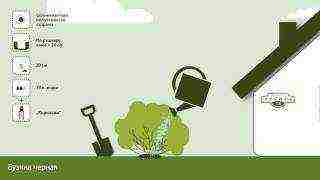
Regardless of how you plant black elderberry in spring or autumn, it is better to dig a hole 40-50 cm deep in advance. The upper, most fertile soil layer is subsequently used to fill up the roots that are at the bottom of the planting pit. Previously, 7-8 kg of organic matter, 50 g of phosphorus fertilizers and 50-30 g of potash fertilizers are introduced there. When all this settles down under the influence of natural processes, the roots of the planted plant will be in the best contact with the soil. It is important that the root collar remains above the ground during planting. If you plan to grow a tree-like shape, then you need to immediately take care of the support. Until the plant takes root in a new place, it is provided with regular watering.
Care
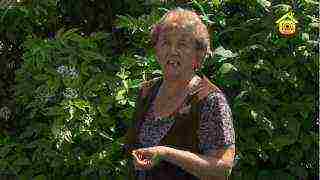
The main elements of caring for black elderberry are:
- watering;
- top dressing;
- trimming;
- weeding and loosening
The plant is not very demanding on moisture and can grow in conditions of a short-term drought, however, in dry summers, watering is indispensable. One bucket of water under the bush will be enough for a week of moisturizing.
Top dressing is best done in early spring. The introduction of nitrogen contributes to the active growth of the vegetative mass. The plant is most responsive to urea. Solid fertilizers are embedded in the soil to a depth of 10-12 cm, liquid fertilizers are applied with irrigation.
"As organic matter, you can use solid manure, compost or infusion of bird droppings."
Elderberry pruning is carried out with the aim of giving the plant the desired shape, rejuvenating and healing it. Formative pruning can be done at any time during the growing season. In the spring, pruning is needed to remove branches frozen and damaged during the winter. The same procedure can be carried out in the fall.
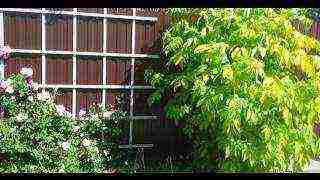
The largest number of fruiting ovaries is formed on 2-3 year old branches, over time their number decreases, and by the age of six they completely cease to bear fruit. Therefore, it is recommended to remove old branches of elderberry. Once every three years, in order to rejuvenate, the ground part is cut so that only 10 centimeter stumps remain, which are covered with garden pitch. Over the summer, new shoots grow, and the bush is transformed.
Weeding and loosening of the trunk circle is favorable for the development of elderberry. To prevent the re-emergence of weeds, as well as to maintain optimal soil moisture for a long time, mulching is an excellent technique. For these purposes, you can use dry grass, chopped bark or sawdust.
Reproduction methods
Elderberry propagation can be carried out:
- seeds;
- cuttings;
- layering;
- dividing the bush
For those who know in practice how to grow a perennial plant from seeds, such an elderberry reproduction will not be difficult. To obtain seed, large ripe berries that have reached physiological ripeness are selected. Usually this period is the end of September - October.Due to the rapid loss of germination, the seeds separated from the pulp are immediately sown into the ground to a depth of 2-2.5 cm. You can use a self-prepared substrate made of humus, turf, peat and sand (2: 2: 1: 1). The shoots that have risen in the spring will grow up over the summer and, having overwintered again, will be ready for planting in a permanent place.  For propagation of elderberry by cuttings, the material can be of two types. Green cuttings are cut in summer in July. It is desirable that they have a heel, at least 10 cm, with two sheets, the plates of which are cut by 2/3, and two internodes. They are planted in a greenhouse with well-wetted soil. Lignified cuttings are harvested in autumn and stored in a cool place until spring. Planting is carried out in the spring according to the same principle as for green cuttings. By the fall, the material takes root. For the winter, it must be covered so that in the spring it is already possible to work with ready-made seedlings.
For propagation of elderberry by cuttings, the material can be of two types. Green cuttings are cut in summer in July. It is desirable that they have a heel, at least 10 cm, with two sheets, the plates of which are cut by 2/3, and two internodes. They are planted in a greenhouse with well-wetted soil. Lignified cuttings are harvested in autumn and stored in a cool place until spring. Planting is carried out in the spring according to the same principle as for green cuttings. By the fall, the material takes root. For the winter, it must be covered so that in the spring it is already possible to work with ready-made seedlings.  Layers for propagation of shrubs are obtained by bending branches to the ground and fixing their central part in the soil. For this, in the fall, the necessary grooves are broken to fix the selected branches in them; the tops remain above the ground. In spring, the rooted elderberry layers can be separated from the mother plant.
Layers for propagation of shrubs are obtained by bending branches to the ground and fixing their central part in the soil. For this, in the fall, the necessary grooves are broken to fix the selected branches in them; the tops remain above the ground. In spring, the rooted elderberry layers can be separated from the mother plant.  Dividing the bush is recognized as the fastest and most effective breeding method. It is used with a sufficient amount of young growth. To split the bush, you will most likely have to resort to using an ax. The wounds obtained during the manipulation are treated with charcoal or garden pitch.
Dividing the bush is recognized as the fastest and most effective breeding method. It is used with a sufficient amount of young growth. To split the bush, you will most likely have to resort to using an ax. The wounds obtained during the manipulation are treated with charcoal or garden pitch.
Pest control
The defeat of the shrub by pests can be detected by the characteristic curling of the leaves. These are usually aphids or spider mites. Other pests are also known: tailed moth, elder miner fly, leaf mite. At the first signs of damage, the entire plant should be treated with a suitable insecticide, it is important not to waste time. For this, voloton, karbofos, fufanon are suitable.
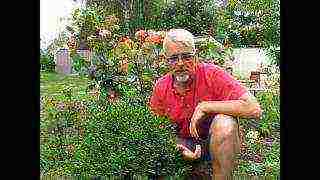
Proponents of natural methods of struggle can try to save the day with an infusion of red pepper or onion skins.
Disease prevention
Black elderberry is weakly affected by diseases. Powdery mildew, as a possible manifestation of a fungal infection, is eliminated with Bordeaux liquid. Preventive treatment of the plant in early spring will help prevent disease. There are also many effective new generation fungicides available.
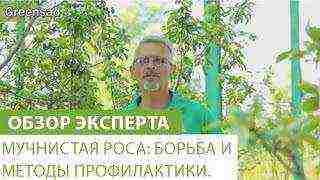
Possible difficulties
Difficulties in the cultivation of elderberry can arise when you do not know the basic rules of agricultural technology of this culture. For example, planting in poor sandy soils or in areas with heavy shade can result in a lack of fruiting and even flowering. In each specific case, a way out can be found, since there are now enough opportunities to obtain the necessary information.
Preparing for winter
Before going for the winter, it will be useful for the black elder to undergo sanitary pruning, which allows the plant to be protected from infections lurking in sick and damaged parts.
By October, digging the soil adjacent to the trunk is carried out. If the autumn was dry, it is useful to saturate the soil with the missing moisture. Processing the trunks with lime or chalk with the addition of an antiseptic will protect the bush from sunburn, diseases and pests.
Showing minimal care for such a familiar and at the same time interesting culture, it is so easy to fill the dacha corner with beautiful flowering in spring, luscious foliage in summer and healthy fruits in autumn. And, perhaps, one summer evening among the branches the elder mother, whom the great storyteller once saw, will smile at you.
The Elderberry genus belongs to the Adoksov family and includes more than 20 species.
These are shrub plants, less often trees, the height of which ranges from two to five meters. Shoots branch well. The foliage is long. Not paired with feathery, opposite. The flowers are white or yellowish. The fruit is a black berry.All parts of the elderberry are poisonous, and only the black elderberry is less toxic, although everything is exactly poisonous.
Elderberry varieties and species
Blue elder one of the decorative types. It is a tall tree, but it can also be formed as an ornamental shrub. The bark has a light shade, which gives off red on young branches. Inflorescences are cream-colored, black berries. Poorly tolerates frost.
Siberian elder originally from Siberia and the Far East. A tall shrub plant that can withstand cold weather well.
Elderberry herbaceous more common in Eastern Europe and the Caucasus. This species blooms beautifully, but has a disgusting smell. Can be grown to repel harmful insects.
Elder canadian originally from North America. Highly decorative shrub. The branches are yellowish, the foliage is very long, the flowers are yellow and form large umbrellas. Suitable for growing in the middle lane.
- Popular Aurea variety - in spring and autumn, its foliage becomes yellow in color.
Elderberry red or racemose comes from Western Europe. Grows up to 5 meters. The foliage is oval, long, not paired with feathers. Inflorescences are yellow-green in color. The berries are red. The plant gives off a bad smell, but is very attractive during flowering. In addition, it has a dwarf variety, as well as purple and yellow (inflorescence color). This species is extremely toxic.
Elder Siebold a Far Eastern species that also grows on the Japanese Islands. A tall bush, reminiscent of a red elderberry, but taller and more massive.
Popular for its variegated varieties:
- Marginata;
- Pulverulent.
Elderberry black or tree-like probably the most common species that grows wild quite often. It is a very tall shrub with opposite foliage, not paired. The inflorescences may give a little yellow. The berries are black, have less toxicity than other species and can be used to make jams and wines.
Common varieties:
- Black beauty,
- Madonna,
- Laciniata.
to the table of contents
Black elderberry planting and care
For planting, it is better to select seedlings of one or two years of age. The planting procedure is usually carried out in spring or autumn. The shrub does not require special conditions, but nevertheless, a lighted place should be selected, otherwise the bushes will not be so beautiful.
In terms of soils, loams or podzolic, slightly acidic substrates are better suited. If the reaction is too acidic, then dolomite flour must be added to it before planting, but this must be done in advance, at least six months before disembarkation.
This plant is often planted near flocks of flies, for example, next to compost pits, because the smell exuded by foliage and branches drives away flies and other insects.
Lilac also has a number of medicinal properties and contraindications, and at the same time it is a highly ornamental shrub, grown for planting and care in the open field. You can find recommendations for growing in this article.
to the table of contents
Elderberry planting
A month before planting the plant, they dig a hole, which will be 80 cm deep and half a meter in diameter. Digging the earth, the upper part of it is thrown into one pile, and the deeper into the second. If you want to have an elder tree, then you need to drive a peg into the hole, which will later serve as a support. When growing a shrub, no support is needed. The upper ball of soil is mixed with 7 kilograms of humus, 50 grams of phosphorus and 30 potassium, then one third of this earth is poured onto the bottom of the pit.
To protect yourself from excessive filling of the garden with shoots, you need to dig a net, iron or slate into the ground after about 50 cm from the trunk.
When the time for planting comes, the bottom is loosened and the seedling is placed in the pit. To begin with, unfertilized soil is poured into the pit, which was deeper, and then the rest of the soil with fertilizers is poured. After these procedures, the root collar should be slightly above the soil level.Then the ground is trampled down and a bucket and a half of water is poured under the seedling. Autumn planting is carried out in the same way.
to the table of contents
Elderberry processing
With the arrival of spring, you need to take care that the plant does not get burns from the bright sun. For this, the main shoot and skeletal branches are treated with lime. Also, in the spring, it is necessary to disinfect with potassium permanganate and garden varnish the damage received in winter due to pests.
When the heat is established, it will be possible to carry out a shaping pruning of the bush, and then disinfect it with 1% Bordeaux liquid, which will protect the elderberry from pests. If there was little snow in winter, then it does not hurt to pour a bucket of water under the plant.
When the flowering ends, it does not hurt to carry out another treatment with Bordeaux liquid, which will protect against insects and powdery mildew.
to the table of contents
Watering the elderberry
With the arrival of summer, the plants begin to grow strongly and set berries. Based on this, the soil must be often loosened and watered so that it is moist, but the water does not stagnate in the roots. If the bush is frozen in winter, then it will begin to expel the shoots from the root, which must be cut off immediately, otherwise they will grow faster than the bush.
In rainy seasons, elderberry does not need watering; you can also protect yourself from this by covering the area with compost mulch. If the summer is very hot, then watering is carried out every 7 days, pouring a bucket of water under the bush.
to the table of contents
Elderberry fertilizer
If your soil is nutritious, then you can refuse fertilizers, but when grown in poorer soils, nitrogen fertilizing, which is applied in the spring, will not interfere. For this, organic matter, for example, chicken droppings, is quite good.
to the table of contents
Black elderberry pruning
If it rains a lot in summer, the stem growth may start again and then it will be necessary to cut the tops of the shoots to stop this process.
As mentioned, formative and sanitary pruning is performed in the spring and fall. In addition, once every 3 years, it is necessary to carry out a rejuvenating pruning of branches up to 10 cm. It is better to carry out this large-scale pruning with the arrival of spring - before the buds swell.
to the table of contents
Elderberry in winter
In the fall, you need to start preparing the shrub for wintering. Sanitary pruning of the branches is performed in September. By October, it is necessary to dig up the soil on the site, and if it is autumn without rain, then it is good to water the plants so that they are saturated with moisture for the winter.
In the middle of autumn, it is necessary to again treat with 1% Bordeaux liquid or a similar preparation. To protect against gnawing pests, the boles are treated with lime or chalk with copper sulfate. The plots are covered with dry leaves or humus, and when snowfalls begin, the trunks are covered with snow.
to the table of contents
Growing black elderberry from seeds
Elderberry can be propagated by seed and vegetative methods. The seed method does not preserve the varietal characteristics of the plant, therefore it is very rarely used.
The seeds must be separated from the berries by rubbing the latter through a sieve. Sowing is carried out directly into the ground in the fall, deepening the material by a couple of centimeters.
to the table of contents
Propagation of black elderberry by cuttings
Green cuttings are prepared in early or mid-summer - they should be about 11 centimeters long and have a couple of internodes and two upper leaves, from which they cut off most of them, leaving only four segments.
The material is rooted in sand with peat, mixed in equal proportions, after pretreating the cuts with a root formation amplifier. It is necessary to keep the cutting in greenhouse conditions, which can be achieved by covering it with polyethylene.
From time to time, the ground under the cutting should be slightly moistened and water should be sprayed onto the polyethylene walls to increase the humidity. Try to keep water out of the foliage. In the fall, it will be possible to transplant the cuttings into open ground.
to the table of contents
Reproduction of black elderberry by layering
Layering is one of the most reliable ways. To do this, young branches are bent to the soil and sprinkled with soil, into which you can add a little compost.
The cuttings need to be watered from time to time, and when it takes root and becomes strong, which is enough for one season, it is separated from the parent and transplanted to a permanent place.
to the table of contents
Elderberry reproduction by dividing the bush
They resort to dividing the bush in the fall. Large bushes are dug up and divided into equal parts. This will not be so easy and you will have to resort to an ax.
The cuts are powdered with charcoal and the cuttings are planted in the finished wells.
to the table of contents
Diseases and pests
When it comes to pests and diseases, there should be no problem. It is worth mentioning here only aphids.
So that she does not attack the bush in the future, you can add Karbofos treatment to the spring disinfection.
to the table of contents
Elderberry black medicinal properties
All types of elderberry are very poisonous and only black elderberry, which has less toxicity, is used in medicine and for canning.
Since there are many useful substances in the leaves, flowers, bark and berries of this plant, they were used in folk medicine, but with great care, because if used improperly, hydrocyanic acid poisoning can occur.
For example, an infusion of dried berries was used for problems with the gallbladder and intestines. Tea was used for colds and as an anti-inflammatory, antibacterial agent.
The foliage contains substances that are astringent, diuretic and soothing.
A decoction of the bark was used for gout, kidney disorders, and skin problems.
Despite the wide range of applications, it is strongly discouraged to self-medicate, because you can easily make a mistake and pay dearly for it. In addition, you can easily confuse red and black elderberry, and the former is incredibly poisonous.
to the table of contents
Elderberry black contraindications
Preparations and products with black elderberry should not be taken by pregnant women, patients with colitis, people with stomach problems, as well as those suffering from diabetes insipidus and Crohn's disease.
Traditional healers often provide elderberry as a cure for oncology, but there is no real evidence for this. Yes, if used correctly, this plant has a general strengthening effect on the body, but it does not cure cancer specifically.
to the table of contents
Elderberry wine
To make elderberry wine, you need to take 3 kilograms of berries, 3 liters of water, 1 kilo of granulated sugar, 5 grams of citric acid and 100 grams of unwashed raisins, wine yeast.
To begin with, the berries are washed, separated from all the legs and crushed. Pour 100 g of granulated sugar, citric acid and 2 liters of boiling water into the mass. All are mixed and kept on the stove at low power for 15 minutes.
After that, the mixture is left to cool and it is squeezed out. The liquid is poured into a glass fermentation bottle. Syrup is made from the remaining water and sugar, cooled and poured into squeezed juice, raisins and wine yeast are also added.
When everything is done, a water seal is installed and the bottle is kept in the dark and warm.
At the end of fermentation, the wine is filtered from the sediment, poured into glass bottles and left so for six months. If in the process of infusion a precipitate appears again, then the liquid must be filtered again.
to the table of contents
Black elderberry syrup
Elderberry can be used to make a delicious syrup. To do this, a kilo of berries are poured into 400 ml of water, brought to a boil and cooked for 20 minutes.
After that, the mass is squeezed out, and another kilo of granulated sugar is added to the resulting liquid, put on fire until it boils and boiled a little until the sugar dissolves. The syrup is bottled or jars and kept closed in the refrigerator.
to the table of contents
Elderberry jam
Elderberry can also be used to make jam easily. To do this, you need to mix the berries and sugar in a one-to-one ratio and leave the berries to juice up.
After that, the mixture is brought to a boil and cooked for at least half an hour until cooked, which is determined by dropping the jam on the nail - if it spreads poorly, then it can be poured into jars.
to the table of contents
 The elderberry genus has up to 40 species, the most decorative of which is the black elderberry. Planted on the site, over time, it will give you useful fruits. The plant is not demanding to care for and looks gorgeous in the garden, which can be seen in the photo.
The elderberry genus has up to 40 species, the most decorative of which is the black elderberry. Planted on the site, over time, it will give you useful fruits. The plant is not demanding to care for and looks gorgeous in the garden, which can be seen in the photo.
Decorative forms and varieties
Black elderberry is a large ornamental deciduous shrub or tree. The plant is a long-liver (up to 60 years). It grows in height by 3-4 m, sometimes up to 7 m. The leaves are rich green, pinnate, dissected into 5-9 lobes, when rubbed, they exude an unpleasant odor. Small white or yellowish flowers are collected in loose shields. The fragrant aroma of flowers attracts many pollinating insects to the garden. Fruits are glossy drupes in loose racemes. The leaves, bark and trunk of black elderberry are moderately poisonous.

Elderberry is very decorative both during flowering and fruiting.
Elderberry blooms in June for 3 weeks. By September, edible, sweet and sour fruits ripen, which are consumed both fresh and processed (jam, jams, wine).
The black elderberry species includes many garden forms. Among them there are bushes with a columnar (b. Pyramidal) and drooping (b. Weeping) crown. The most interesting varieties are shown in the photo. Among the species with an unusual shape and color of foliage, one can distinguish:
B. fern-leaved - the leaves are narrowly cut, and the white flowers have a musk scent.
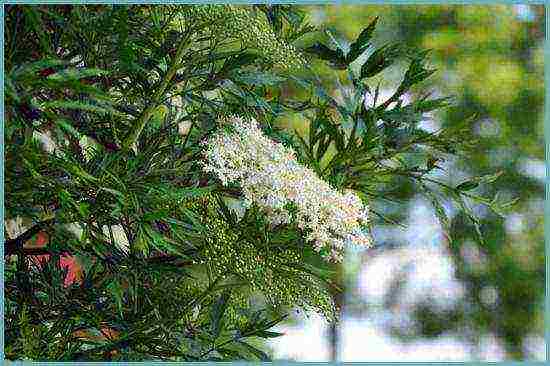
Elderberry fern
B. porphyry - a form with purple or ink leaves and pinkish flowers with a pleasant strong scent. Popular varieties:
- "Purple";
- "Ginshu violet" is interesting for the changing color of the leaves: green is replaced by ink, and in autumn to bright red;

Variety "Ginshu violet"
- "Black Beauty";
- "Eve".
B. powdery - differs in the presence of yellow or white spots on the foliage. Interesting varieties:
- "Luteovariegata" - with yellow edging along the leaf;
- "Pulverulenta" - the foliage is densely covered with white plaques;

Variety "Pulverulenta"
- "Madonna" - foliage with multiple yellow spots.
Of the variegated varieties, it is worth highlighting "Albo-variegata" - with white-variegated, "Aureo-variegata" - with golden-variegated and "Aurea" with yellow leaves.
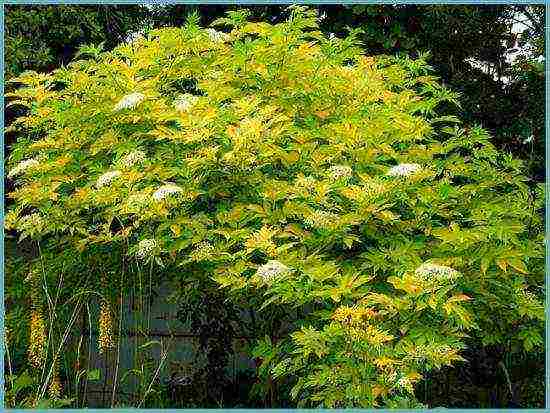
Variety "Aurea"
The variety "Witches Broom" ("Witch's broom") reaches a height of only 20 cm, blooms rarely and does not bear fruit at all. The variety "Kazachka", on the contrary, is distinguished by abundant flowering and fruiting.
Landing subtleties
Black elderberry is a fairly hardy plant. Well-lit areas are chosen for planting. The plant is able to tolerate shade, but the decorative appearance suffers significantly from this.
Important! Forms with a bright and variegated foliage color are planted only in sunny areas. In the shade, the leaves become faded and lose their decorative effect.
Due to the ability of elderberries to scare off flies and other harmful insects, they are often planted near street toilets and drain pits. Fruit shrubs and trees growing nearby will contribute to cross-pollination.
For normal development, black elderberry prefers fertile slightly alkaline soils (loams). With an acidic reaction, the soil should be deoxidized with lime in advance.
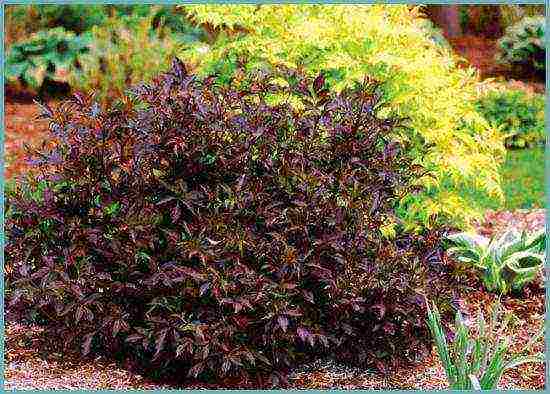
For planting black elderberry, choose fertile soil
Saplings are planted in spring or autumn when the weather is warm. The planting hole is dug to a depth of about 40-50 cm and generously filled with organic matter and phosphorus-potassium fertilizers. The root collar is not deepened. The seedling is sprinkled with earth and tamped under the weight of an adult's body. Until the seedling takes root and grows, it needs to be watered regularly. A young bush blooms in the third year.
Growing and care
Caring for black elderberry comes down to watering, keeping the soil clean and loose, and pruning. The plant can tolerate short-term drought, but prefers moist soil without stagnant water. On moist soils, the elderberry looks juicy, blooms well, and the fruits are poured.
Advice.To maintain soil moisture in hot weather, it is recommended to mulch the near-stem circle of black elderberry with sawdust, leaf litter, peat or other materials.
Pruning of bushes is carried out for decorative (to shape the crown) and anti-aging purposes. Frozen and damaged branches are cut off in young plants in spring. In summer, the bushes recover quickly. To rejuvenate old bushes, pruning short, leaving no more than a quarter of the trunk. New shoots will grow over the summer.
Important! Pruning is especially important for fruiting elderberry varieties. Upon reaching the age of six, the branches cease to bear fruit. The peak of fruiting is observed on two-three-year-old branches.
The defeat of the plant by diseases practically does not occur. The crown of the bush is sometimes attacked by aphids and spider mites. If signs of trouble appear, the plant should be immediately treated with fungicides.
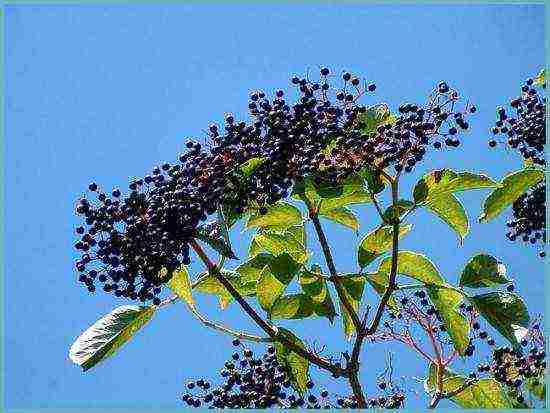
Elderberries are ready to harvest in the fall
The fruits are harvested when fully ripe. This happens in mid-September. The brushes are cut off entirely. The shelf life of berries is short - 8-10 days in the refrigerator, so they are often processed. Uncut brushes are able to remain on the branches all winter. For medicinal purposes, elderberry flowers are harvested by cutting and drying them in the shade of trees or in the attic.
Fertilization and dressing
Fertilizers for elderberry are applied in early spring. Solid mineral fertilizers are scattered in the near-trunk circle, after which they are embedded in the soil by harrowing by 10-15 cm, soluble fertilizers are added with watering.
Advice. Black elderberry is very responsive to the introduction of urea.
From organic matter, solid manure or compost is used, as well as manure infusions. It is better to bring them in in the fall, after a year.
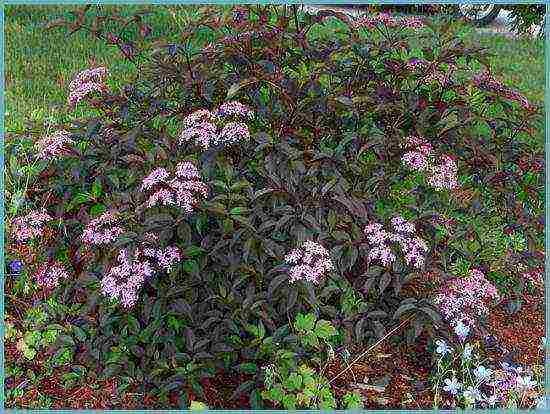
For black elderberry, it is enough to feed once a year.
Reproduction
Black elderberry breeding methods:
- seminal;
- green or woody cuttings;
- layering.
Elderberry seeds black autumn is sown in the soil. After a year, the seedlings reach a height of 50 cm and are ready for transplanting.
Important! Black elderberry grown from seeds loses most of its varietal properties. It is impossible to predict which plant will turn out, highly decorative or unsightly.
Green cuttings immediately after the cut, they are planted on a temporary bed. Woody shoots are cut in the fall and stored in a cool place until spring. In the spring, cuttings 25 cm long are cut, leaving at least two pairs of buds, and also planted in a temporary place for rooting. The soil on the site is always kept moist. By autumn, cuttings form roots and young shoots. For the winter, seedlings need shelter. The grown bushes are transplanted to a permanent place.
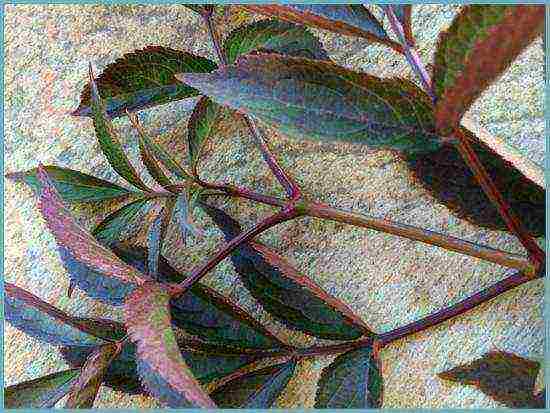
Green elderberry cuttings
To receive layering the branches of the black elderberry are dropped into the grooves in the fall, leaving the top on the surface. In the spring, young shoots will grow in this place, which is recommended to be separated from the mother bush after a few years.
Growing black elderberry on your site is not at all troublesome. She needs elementary care that does not require special skills and abilities. In response, the plant will give you a pleasant aroma during flowering, decorative foliage in summer and healthy berries in autumn.
Planting and properties of black elderberry: video
Black elderberry: photo
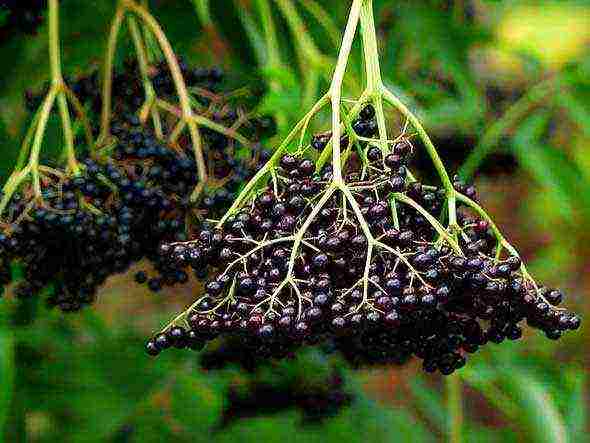

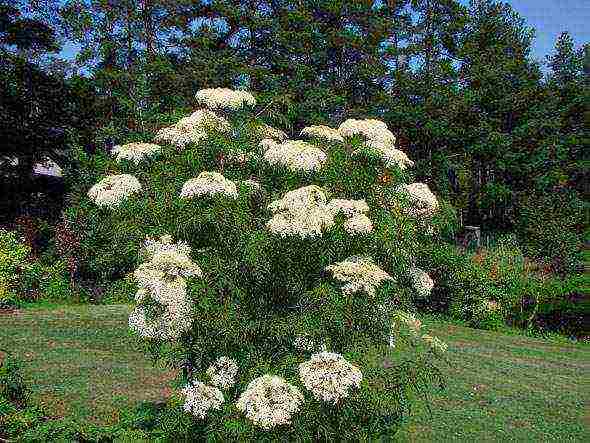
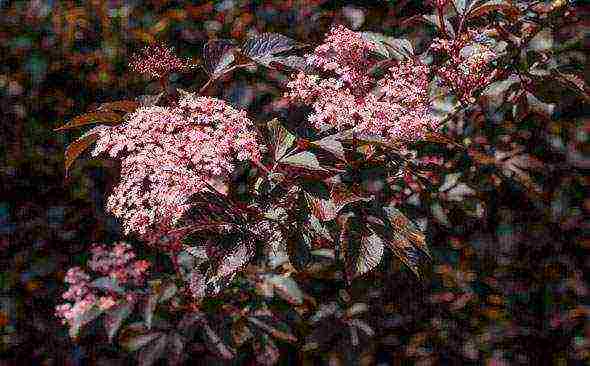

Elderberry (Sambucus) on video.
Elderberry (Sambucus) - shrubs or small trees (3-5 m), many of which are distinguished by decorative fruits. Elderberry red, or racemosa (Sambucus racemosa) has several decorative forms, is unpretentious and also scares off mice. The black elderberry (Sambucus nigra) also has decorative forms, and its fruits are eaten.
Black elderberry is less hardy, but still quite resistant, especially when planted in a place protected from cold winds. Easily recovers if the shoots are frozen over.
It is similar to the Canadian elderberry (Sambucus canadensis), which also has decorative forms. It is a more hardy plant. The listed species are more or less shade-tolerant and hygrophilous. They prefer rich soils.They tolerate pruning, including "on a stump". Elderberry is propagated by seeds, cultural forms - by cuttings.
What does the black and red elderberry look like, how the shrub blooms (with photo)
What an elderberry looks like, look at the photos below, and admire its unique beauty:
This typical specimen of the honeysuckle family is an extremely attractive plant fanned with unusual beliefs. Healers consider it a talisman against evil spirits, an improvised material for creating medicines. What an elderberry looks like is probably known to every summer resident, a villager and even an inhabitant of a metropolis far from gardening.
There is a whole palette of varieties and species of elderberry, about 40 of them are known. The characteristic aroma of foliage scares off annoying insects (for example, flies), rodents and other pests. Bushes are often planted in the area of cesspools and compost pits, outdoor toilets, and dung heaps.
In addition to the ubiquitous red and black elderberry, other varieties of this plant are cultivated, for example:
Canadian
Blue
Siberian
Herbaceous
Zimbold
How beautiful different species and varieties of elderberry look in all sorts of territories, evaluate in the photo:
Red, as well as herbaceous elderberry are inedible plants, they contain cyanoglycosides. Black elderberry, on the other hand, is known for its healing qualities. Sometimes it is not easy to distinguish the poisonous berries of the scarlet elderberry from the medicinal black fruit. If you are not completely sure which plant is in front of your eyes, you should not risk it.
Photos of black and red elderberries are offered below, view them in order to see important differences:
Most of the elderberry varieties are quite suitable for the Moscow region, they can be planted even in the North-West. If you provide the plant with reliable insulation for the winter, then it will not suffer from severe frosts. Ornamental varieties are cultivated for the purpose of decorating personal plots, summer cottages, gardens, park areas. Elderberry in landscape design is in great demand, because the deciduous mass and flowers of this plant are unusually beautiful, can have a variety of colors and shapes.
How to propagate elderberry by cuttings and in other ways
Elderberry is bred by cuttings, sowing seeds, dividing bushes or forming layering. Propagation of elderberry by cuttings is a convenient and most well-known method. Cuttings are used both lignified and young. They must necessarily contain at least 3 internodes, several upper sheets. The material is harvested in June-July.
Cuttings cut from an adult plant (10-12 cm) are placed in a sand-peat mixture, covered with a jar on top. That part of the stem that will come into contact with the ground should preferably be treated with a root former before planting - this composition will speed up the rooting process at times. Regular watering is required. In the fall, seedlings are sent to open ground.
Seeds are harvested around the end of October, sowing is carried out immediately or in spring. If the procedure is scheduled for the spring, then the seeds must be prepared appropriately:
- they are pre-soaked - for 3-6 days;
- the water is changed daily;
- then the seeds are mixed with wet sand, placed in an airtight container, and refrigerated for 50-60 days.
Seeds are sown to a depth of 2-3 cm, observing the distance between the rows. Seedlings in the first summer season noticeably grow (up to 0.5-0.6 m), at the age of 1 year they are transplanted to a permanent "habitat". Autumn sowing does not require seed pretreatment.
The key features of this method of planting and grooming are shown in the photo - view them to do all the steps correctly:
How to propagate elderberry in order to achieve almost 100% survival rate of a young plant? The best option is the formation of layers, which are added dropwise from an adult shrub in autumn or spring. A branch of a 2-3-year-old plant is bent down, laid in a trench dug the day before. Compost is added to the bottom of the groove.The shoots are securely fixed with a bracket made of metal, they are well instilled, leaving the top of the branch above the ground (after planting it is cut off by 10 cm). The plant needs frequent watering, especially before it takes root.
The division of the root system is performed in the fall. A large, perennial bush is dug up, divided into equal sections. This will require a saw or a sharp ax. Places of cuts / cuts are coated with ash, immediately planted in prepared trenches or containers (if spring planting is planned).
How to plant an elderberry correctly
To get a strong, beautiful plant, you need to know how to plant the elderberry correctly. The shrub is not particularly picky about the soil on which it grows, however, preference should be given to loam, sod-podzolic soil with a pH of 6.0-6.5. Excessive acidity of the soil is neutralized by liming (dolomite flour is added).
The plant can put up with excessive moisture and moderate shade, but it definitely cannot withstand drought - it grows poorly, loses its decorative effect, and is capable of completely dying. This must be taken into account when choosing a landing site and with further care.
It is recommended to pay attention to the open, sunny, eastern site of the site. A well-groomed elderberry bush, planted in a suitable place, looks very gorgeous, look at the photo:
The shrub is planted in autumn or spring, depending on the method of reproduction. In any case, the hole is dug in advance (one month before the intended landing). The depth of the pit is 0.8 m and 0.5 m is its circumference. The earth from the upper layers of the ditch is thrown to one side, from deeper layers to the other.
At the bottom of the trench, a nutritional "pillow" is placed, consisting of the following components:
- soil excavated from the surface layers;
- 7 kg of high-quality humus;
- 50 gr. phosphates;
- 30 gr. potash fertilizer.
All ingredients are thoroughly mixed. Cover 2/3 of the mixture to the bottom of the dug hole. On the day of planting, the trench is slightly loosened inside, the root part of the seedling is lowered there, sprinkled with soil previously obtained from the lower layers. Top up with the rest of the fertilizer mixture. The area around the trunk is tamped, watered with water (1-15 liters). When the liquid is absorbed, the seedling is carefully tied to a peg.
For some of the main stages of planting black elderberry and caring for it in the future, check out the photo:
Although the plant is unpretentious, some attention must be paid to it, otherwise the shrub will not be able to perform its decorative functions.
The nature and volume of care measures depends on the season:
- Spring. In March, there is a risk that the plant will suffer from temperature fluctuations, when the bark is strongly heated by the sun's rays during the day and rapidly cools at night. To prevent damage, paint over all the forks with lime mortar. If there are cracks or traumas caused by rodents on the trunk, then all such "wounds" should be washed with a solution of potassium permanganate, covered with garden varnish. On a fine, not cold day, they start pruning. Dried, unhealthy, frostbitten shoots are subject to elimination. With the help of a pruner, the crown is given a neat look. Cuts and places of cuts are treated with Nitrafen or Bordeaux liquid.
- Summer. After flowering, the elderberry is sprayed with special preparations to prevent damage from harmful insects, powdery mildew. The soil in the near-trunk area is loosened and kept moist. In the bushes frostbitten during the winter period, the growth of basal shoots is activated. They are destroyed until they "overtook" the elderberry bush itself.
- Autumn. Autumn care involves watering, harvesting, and preparing for winter. In September, medicinal berries ripen in the black elderberry, they are harvested and processed accordingly. After that, sanitary pruning is performed. When the plant sheds foliage, it is treated with fungicides, insecticides.At the end of the month, they dig up the soil around the trunk, insulate the near-trunk area with peat, humus or straw. Sometimes fertilizers are pre-applied.
- Winter. To prevent frostbite of the root of the bush, periodically pile snow around the trunks. They also make sure that the insulation mulch does not collapse.
A sufficient amount of water is needed by all types of elderberry: black, and red, and Canadian and others. It is possible to reduce the frequency of watering or even exclude them only in a rainy summer and when the near-trunk space is mulched. Mulch (compost, straw, rotted manure) slows down the rate of evaporation of moisture from the soil. In a particularly sultry season, 10 liters of water are poured under each bush, 1 time / week.
Type of black elderberry: varieties for the Moscow region, care and cultivation (with photo)
The most popular, all recognizable species is the black elderberry. Look at the photo of its varieties - all of them, with proper care, can perform decorative tasks:
To even better understand what the black elderberry looks like, read the description below. This is a very productive shrub or a medium-sized tree (no higher than 10 meters). Loves sunlight, but also feels good in the shade. Adult specimens have branched stems, gray bark, rather large (10-30 cm) pinnate leaves, consisting of 3-9 separate segments. Planting a black elderberry and caring for it in the future are simple.
Flowers are collected in wide shield-shaped inflorescences up to 25 cm in diameter: snow-white or with a slightly yellowish tinge, less often - pale pink. To find out how the elderberry blooms, you will have to wait for spring-summer. During flowering, a characteristic aroma spreads from it, which attracts honey insects. Black-purple, glossy fruits with 2-3 seeds and scarlet pulp ripen closer to September. They contain persistent pigment agents.
The berries of the black elderberry bush are sweet and sour in taste, the fruits, as well as inflorescences, contain many biologically active components. Therefore, the cultivation of black elderberry is very important for alternative medicine.
Medicinal infusions with valuable properties are prepared from plant raw materials:
- anti-inflammatory;
- antiseptic;
- sedatives;
- laxatives;
- antipyretic;
- bile, diuretics.
Raw materials are also used for external use for hemorrhoids, burns, diaper rash, abscesses, wounds. Delicious preserves, marmalade, compotes are cooked from the fruits, and liqueur is made. There are contraindications for use (pregnancy, Crohn's syndrome, colitis, etc.). Leaves and bark are toxic to humans.
Growing black elderberry and caring for it have no distinctive features, they are carried out according to the general principles detailed in the article. Reproduction of black elderberry is also carried out in standard ways - each gardener chooses the most suitable technique for himself.
The following will list the most popular varieties of black elderberry, this species is very fond of gardeners and is actively used by landscape designers:
Aurea. A lime-colored crown grows.
Luteovariegata. The leaves are initially bright yellow in color, later they become white-yellow.
Aureo-variegata. The variety is characterized by golden-variegated foliage.
Albomarginata. Leaves are spotty, bordered by a white stripe.
Argentea. Green blotches are present on white leaves.
Guincho Purple. In the spring the crown is green, in the summer it is bright purple. The flowers are pink, fade a little over time.
Black Beauty. Purple leaves, pink inflorescences with a pleasant citrus aroma will conquer every person. The purple-black berries are edible.
Rotundifolia. Slow growing bush with wide leaves. Inflorescences are openwork, not abundant.
Sampo. Variety, valuable for industrial production, with medium brush parameters, but large, appetizing fruits.
Due to its relative resistance to frost, most of the described varieties of black elderberry are also suitable for the Moscow region with its severe climate.
Before using parts of a particular variety for treatment or for food, you need to consult with an experienced herbalist, phytotherapist. This is necessary in order not to confuse edible species with poisonous ones, not to harm health with incorrect dosages.
View of red elderberry: photo and description of varieties
Red elderberry (Sambucus racemosa) - a small deciduous tree begins its pedigree from the mountain slopes of Western Europe. Its distinctive feature is a specific smell and beautiful, but inedible small red fruits. Outwardly, the plant becomes especially attractive just during fruiting. The specimen is quite shade-tolerant, but looks more impressive in good lighting conditions.
The elderberry red varieties are very interesting, decorative, which successfully tolerate formative pruning, unfavorable weather conditions:
Nana. Dwarf, compact shape. It has a nice golden crown, notches along the edges of the sheets. The flowers are green-yellow, the berries are bright scarlet.
Sutherland Gold. It differs from Nana in a more pronounced dissection of the border of the leaves. The variety is resistant to sunlight.
Goldenlocks. A charming plant that reaches a height of 0.75 m.
Has deeply dissected, yellow leaves. Their decorative effect does not deteriorate even under the influence of the scorching sun.
Purpurea. Pleases with luxurious inflorescences of pink, purple hue.
Flavescens. It stands out favorably among other varieties with the original color of the fruit. The beautiful red berries have orange thinning on the sides.
Tenuifolia. The shrub grows slowly, reaching 150 cm.
Arcuate shoots produce fern-like, very delicate leaves. The latter, when blooming, acquire a purple overflow.
How charming the mentioned types of elderberry are, look at the photo:
If we talk about what kind of planting and care are required for the red elderberry, then here the situation is the same as in the case of the black one. All the classic rules of caring are perfectly acceptable for this species. Reproduction of red elderberry is carried out by grafting, sowing seeds, and forming cuttings.
Any part of this shrub contains substances that are toxic to humans. They take care of the plant, after putting on protective gloves, they try to be extremely careful. After work, wash your hands with soap and running water. If during pruning, plant juice or other fragments of it get on an open wound or cut, you should rush to the doctor.
Black and red elderberry in landscape design (with photo)
Black elderberry in landscape design is used quite often, because this plant has many advantages - decorativeness, endurance, unpretentiousness, etc. Other types of elder (red, Canadian) are also used to decorate parks, home gardens, alleys, roadside green stripes.
The plant is highly promising in the aesthetic design of sites:
- If the garden is made in a natural style, then a composition of elderberry bushes will act as a kind of undergrowth for a natural grove. Elderberry will fit favorably into the design of the edge with a lake or pond.
- Graceful colorful inflorescences that cover some elderberry varieties will add a romantic mood to the whole estate - look at the photo for a unique effect they provide:
- In massive rock gardens, dwarf plant species will look great, and "weeping" varieties are suitable for decorating the coastal zone.
- Elderberry is a shrub that is often "invited" to the role of a hedge. It retains its attractive appearance for many months.
- The "responsiveness" of the shrub attracts the close attention of summer residents to it. Growing a black, red elderberry and caring for it are processes that are not associated with any difficulties.With just a few simple tools (pruning shears, shovels, saws), it is easy to turn a planting into a work of art with a minimal investment of time.
How good an elderberry can be in landscape design, look at the photo for yourself:
The usual set of garden and park plants has already become boring. The elderberry bush will bring freshness, innovation, and an interesting twist to the landscape. With its help, a person can show imagination, feel like a real master in creating lovely compositions. It is important that the black elderberry is extremely unassuming in planting and caring, the same can be said about other varieties. You are allowed to boldly improvise with them, decorating your yard.


